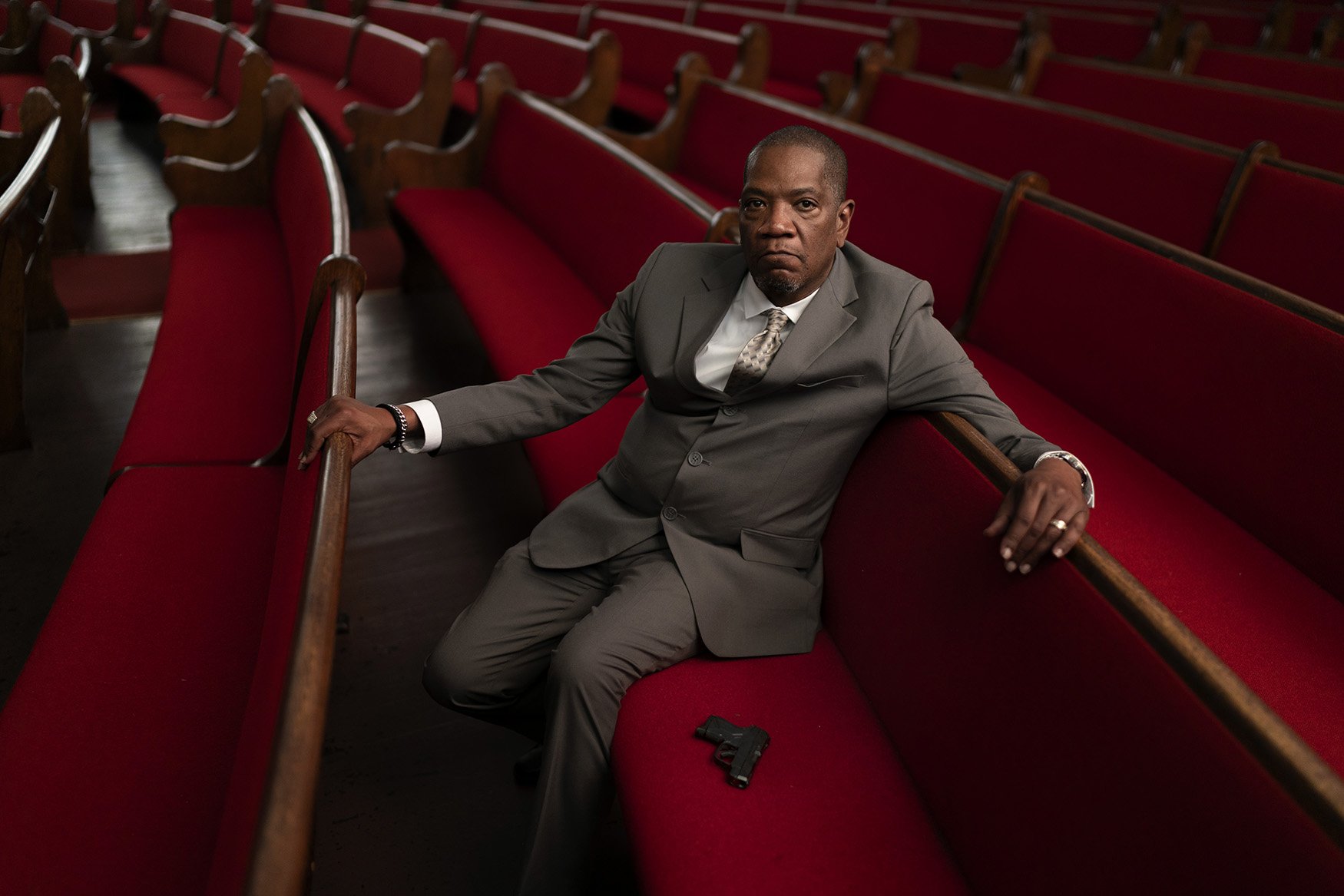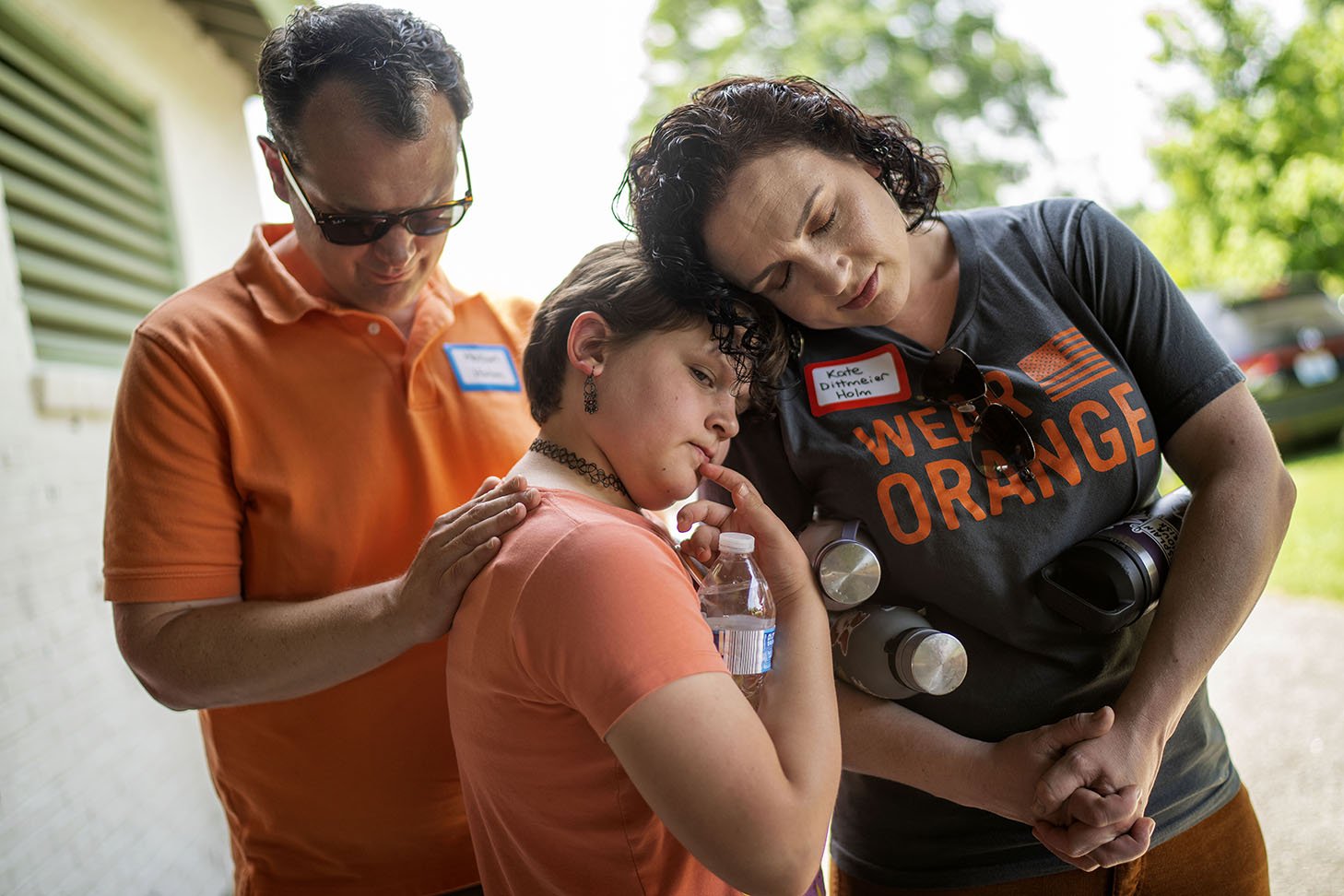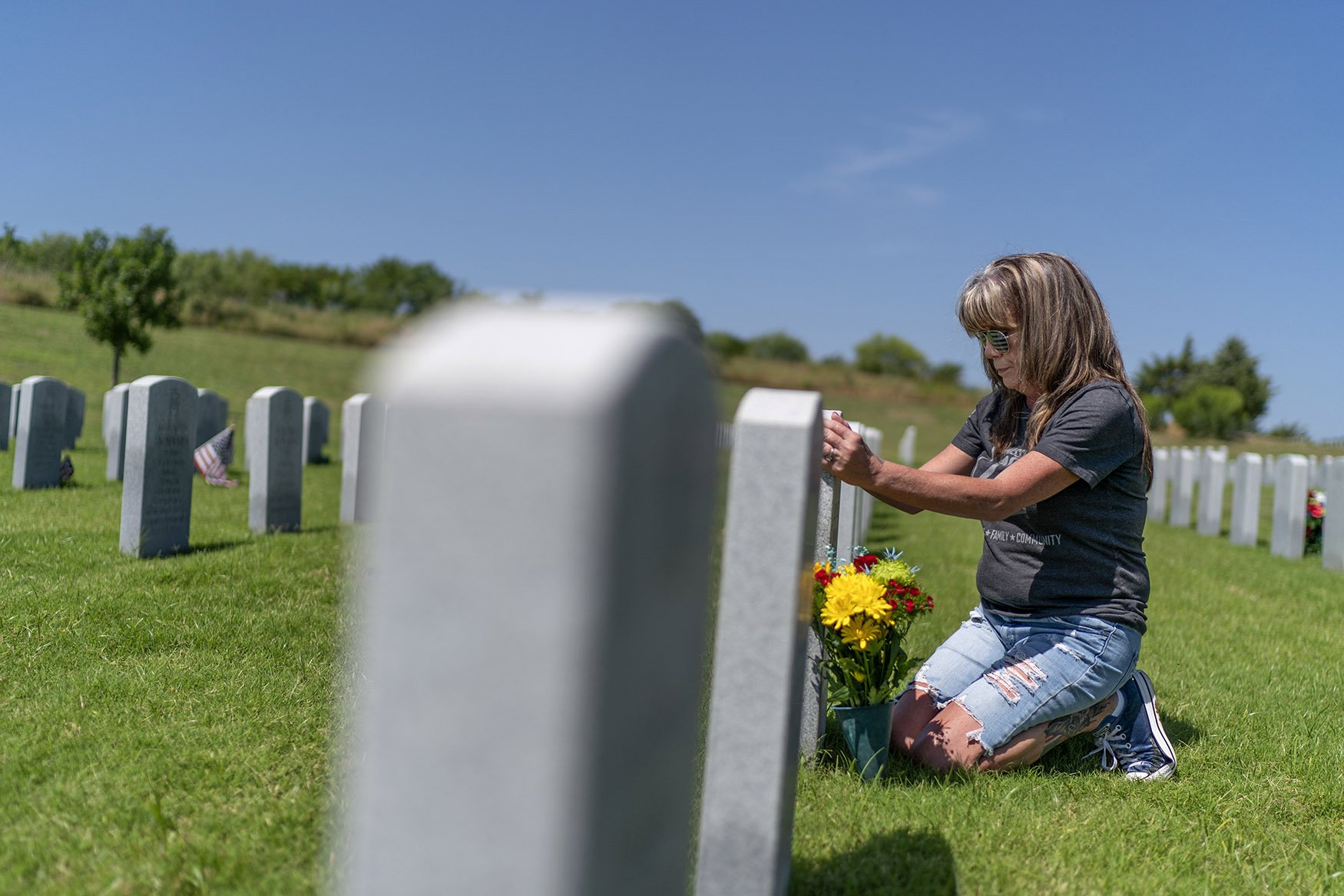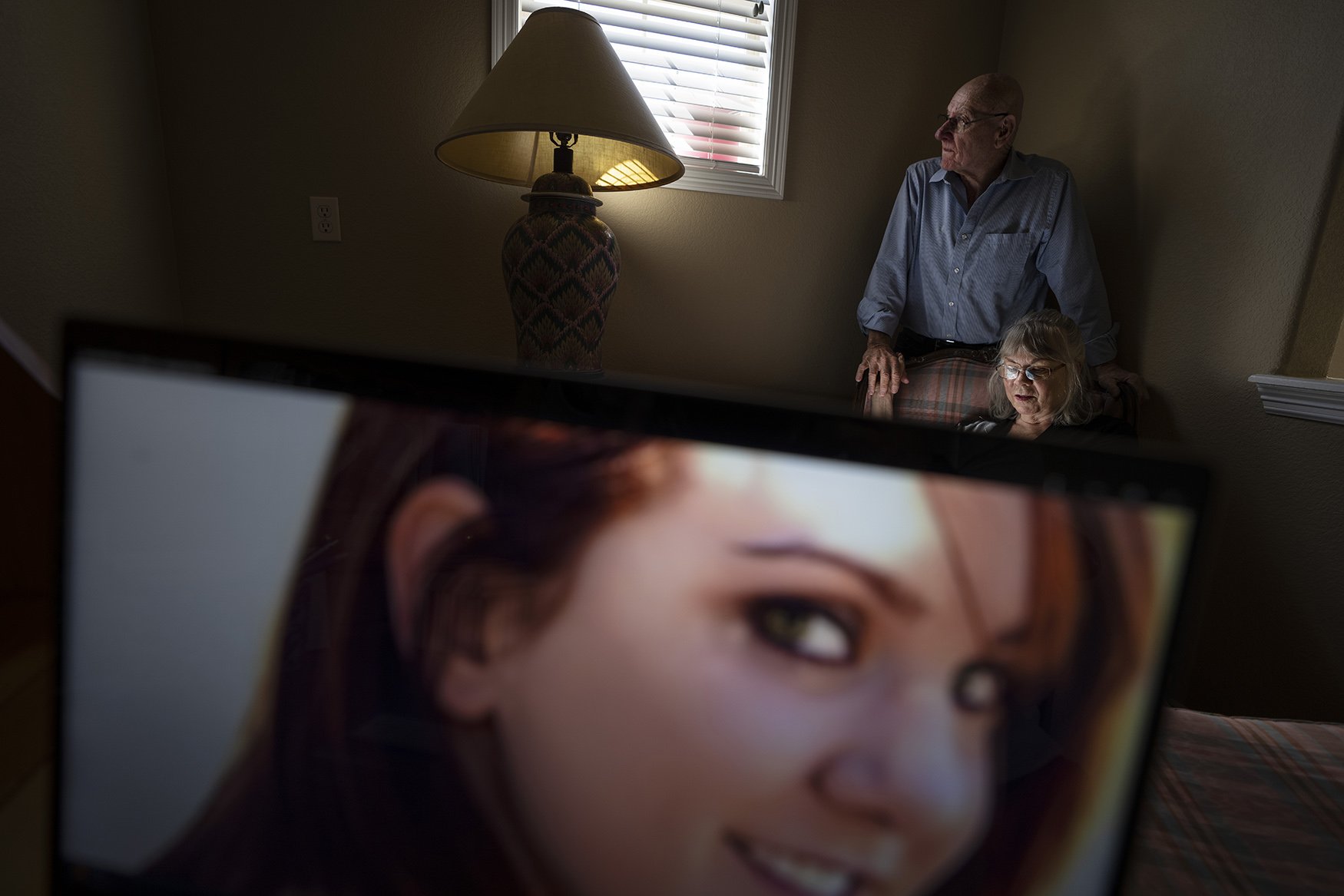A surreal view of a nation unable to move on the cycle of gun violence.

There is no straightforward path forward after a life is torn apart by a shooting. There is no simple solution to America’s unique problem of relentless gun violence. On both counts, the answer is full of nuance and complication.
This series of film photographs is similarly layered, each image a combination of two separate clicks of the shutter, carefully double-exposed by hand in the pitch-black of a traditional darkroom. One picture is placed atop the other and fused to create a single image.
Each captures the twin realities of the subjects in the way only a double exposure photograph could, creating dueling focal points to which the eye cycles back and forth
It’s a surreal view of a nation unable to move on from its own cycle of gun violence.
Krista and Navada Gwynn are seen with silhouettes of their daughters, Navada and Victoria. Krista’s son Christian was killed in a drive-by shooting in Louisville, Ky., in 2019; Victoria survived a shooting two years later. The parents are consumed with worry about the safety of their surviving children.
Missy Jenkins Smith is layered with a photo of her wheelchair. She survived a school shooting in 1997 in Paducah, Ky., that left her paralyzed from the chest down.
The Rev. Jimmie Hardaway Jr. looks out from the altar of his church in Niagara Falls, N.Y., as a congregant bows her head in prayer. After watching worshippers elsewhere be targeted, he now carries a pistol to services.
The Rev. Stephen Cady, with the sanctuary of the church where he preaches in Rochester, N.Y. He rejects the proliferation of guns and says people of faith should look to the Second Commandment, not the Second Amendment.
Hollan Holm is seated in a restaurant as his eyes are trained on the eatery’s door. He survived a school shooting a generation ago in Paducah, Ky., but the scars remain and he fears violence could visit him again.
Janet Paulsen is seen with the driveway at her home, where her estranged husband shot her six times in Acworth, Ga. After he violated a protective order, deputies confiscated more than 70 guns, but left one in his pickup truck. He used it to ambush her.
Lonnie and Sandy Phillips are seen at a memorial for victims of a shooting at a movie theater that killed her daughter in Aurora, Colo. The loss spurred a decade-long trip by the couple to other mass shooting sites.
Navada Gwynn in two images: standing for a portrait, and working on her tablet at her Louisville, Ky., home. After her older brother was fatally shot and her sister survived a shooting, her parents pulled her out of school to keep her safe. The violence has left Navada shaken and anxious.
Sylvia Holm with her elementary school in Louisville, Ky. Her father survived one of America’s first mass shootings in a school and shooting drills have been a fact of life in her own childhood. She believes the burden falls on her generation to work to solve the country’s gun problem.
Barbie Rohde in Dallas at the gravesite of her son, who died by suicide. He was an Army sergeant who had lost much of his hand in a training accident. All he had ever wanted to be was a soldier.
Text from AP news story, Photo Essay: A surreal view of a nation unable to move on the cycle of gun violence, by David Goldman.





